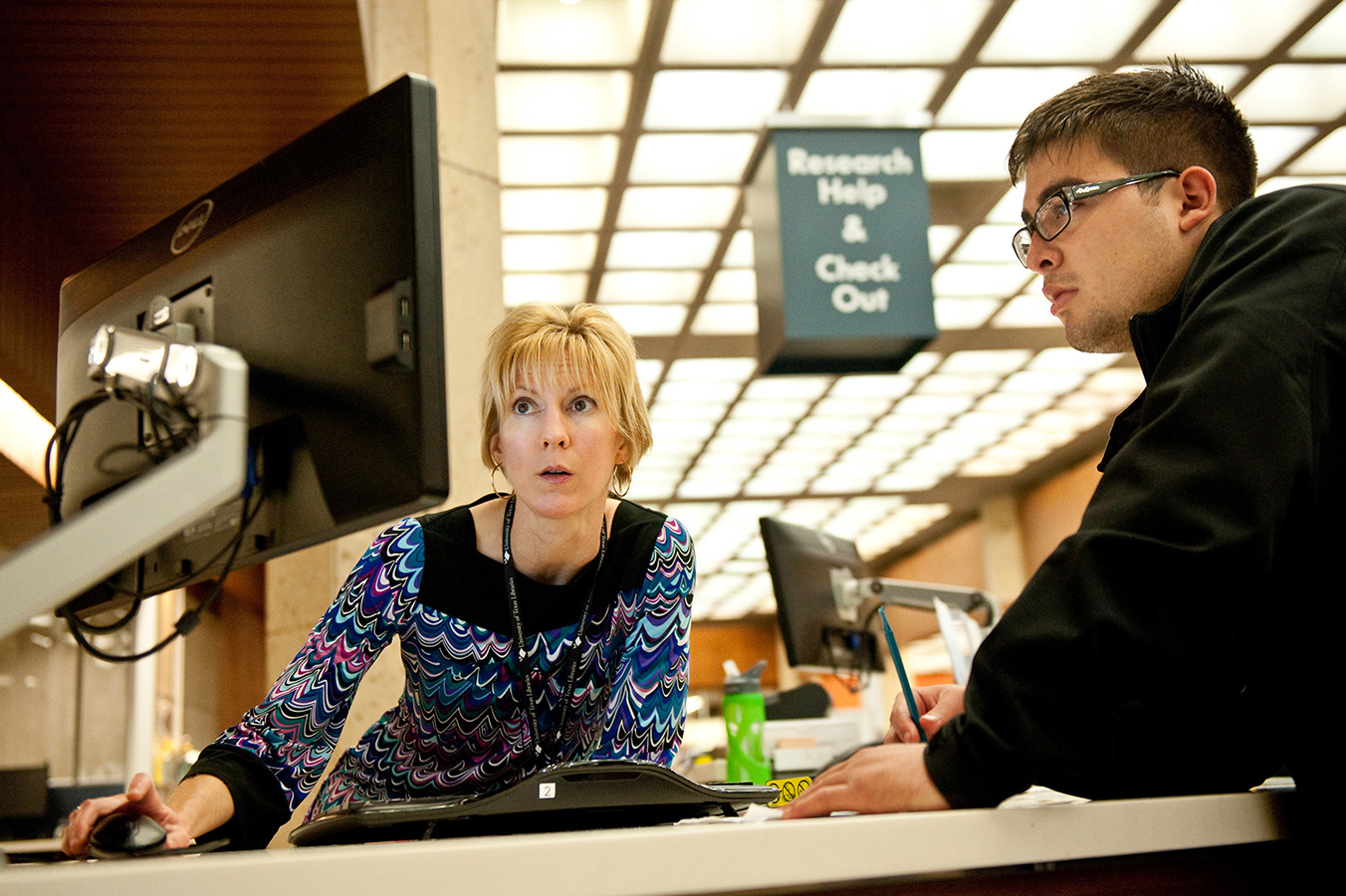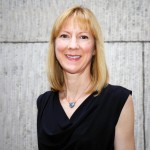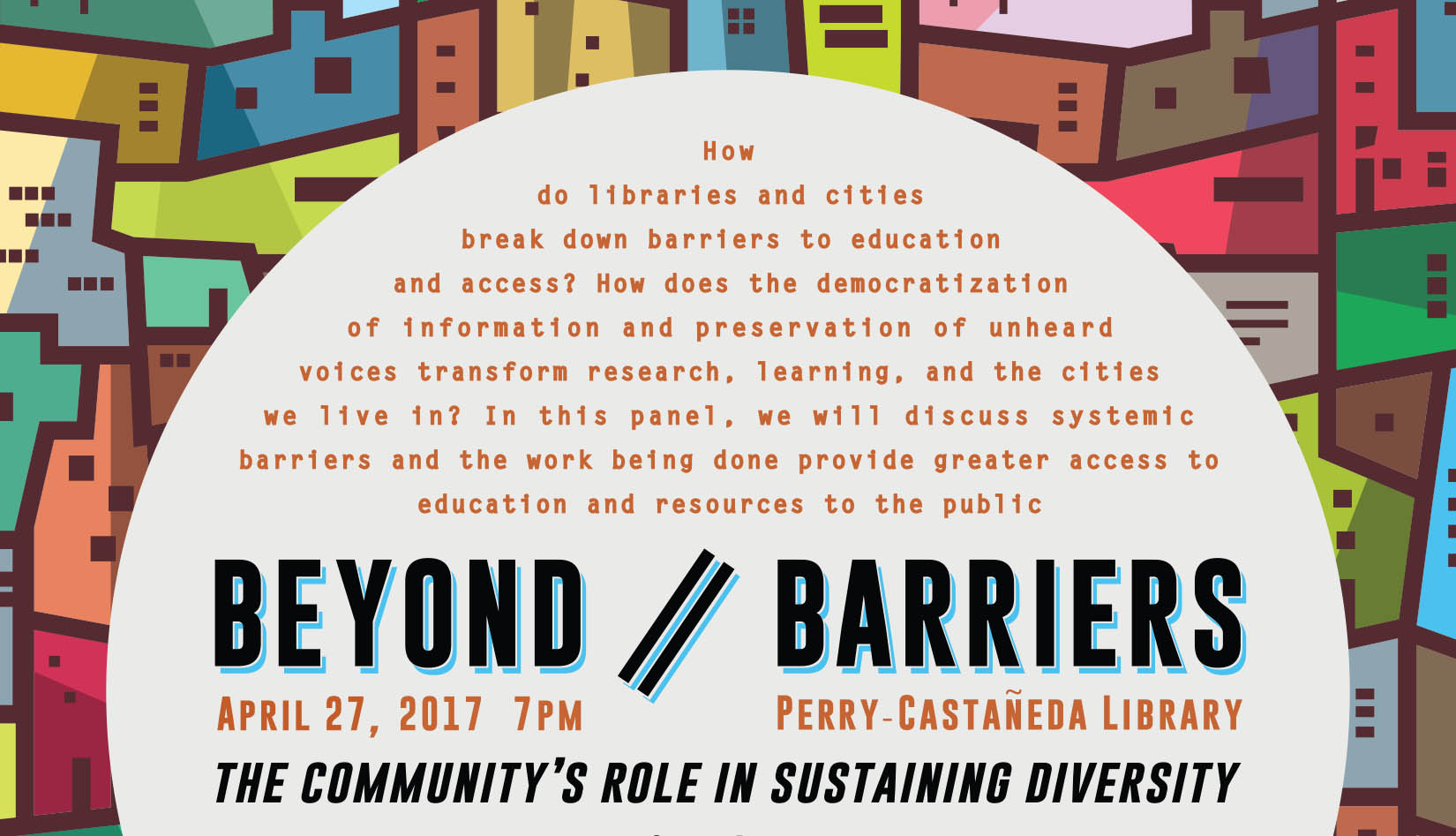
We talk much of collections and spaces as the resources of great relevance to our users. But let’s not neglect the incredible expertise represented by our staff, whose skill and talent provide the basis for all of the work libraries do.
Jenifer Flaxbart is the Assistant Director of Digital Scholarship for the University of Texas Libraries. She directs the recently created Digital Scholarship department within the Academic Engagement division. Her portfolio includes Digital Scholarship projects, education and partnerships, Research Data Services, Scholarly Communication and Open Access initiatives and the Scholars Commons, a pilot space and related services designed to support scholars engaged in the research lifecycle.
She received her MILS from the University of Michigan, Ann Arbor, and a BA in English Literature from Hiram College.
Why did you decide to enter the field of library and information science? What motivated you to seek a library degree?

Jenifer Flaxbart: I knew I wanted to become part of a profession that facilitates the sharing of information and creation of new knowledge. My high school Math teacher opened each new chapter with a lecture and one was about the Ancient Library of Alexandria. I realized my goals for my own education and career aligned with the opportunities provided by the field.
How has your relationship with academic scholars changed over the years?
JF: I have been in several roles in which I’ve been the information conduit for students and faculty, connecting them with relevant resources through the collections acquisition, research consultation, online guides and video tutorials, classroom instruction and frontline reference assistance at a service desk or via a virtual chat service.
More recently I’ve worked with scholars through focus groups, steering committee work, and collaboration to inform space renovation initiatives, plans services and events, and work to create partnerships in pursuit of shared objectives.
Right now I’m participating in a series of Town Hall conversations with faculty about the next big research question at UT Austin through a program called Bridging Barriers that’s coordinated by the Office of the Vice President for Research. The UT Libraries submitted a concept paper that was layered into each of the six themes under discussion. We are well-positioned to assist researchers with data management as well as the creation of Open Educational Resources (OERs). OERs communicate research outcomes and impacts in transparent ways that support students in their studies and benefit members of the public.
How have the ways academic scholars research changed over the years and how has that changed your job?
JF: I’ve been an information professional for over two decades. During that time, I have helped others conduct research in many ways, using card catalogs, CD-ROMs, online databases that charge by the use, and databases that charge by the year. I’ve championed and leveraged the technological shift that enables expanded access as we have transitioned from print-based to online searching.
Because technology enables remote access, research can be done almost anywhere. Students and faculty can work at home and in coffee shops or airports as easily as they can in the library. If you watch them in action, they typically use a hybrid approach: several devices, such as a smart phone and a laptop or tablet, as well as a print book or two and some paper notes.
Many who have experienced this migration retain a fondness for the printed object: content that can be cradled, carried, stashed and retrieved at will, without the aid of a computer or device. Yet technology can enhance access to content in many ways. Digital formats can ensure that the content endures beyond the life of the paper on which it’s printed.
Libraries have, in an effort to accommodate group project work as well as the need for silent study, evolved spaces formerly dedicated to the storage of physical formats to compelling, flexible spaces equipped with embedded technology and robust wireless networks. The spaces and added-value services provided attract students and faculty engaging in the modes of research, teaching and learning that define higher education today.
Can you think of an example where access to content has been transformational in your personal life?
JF: Being able to source article or book content from our collections or through our InterLibrary Services unit is one of the privileges of UT affiliation. I’ve leveraged this access in simple ways, like using authoritative reviews to inform major purchases, and in more profound ways that enrich my professional knowledge and my parenting style.
Another fun example of how content can be personally impactful, for my family, is Turner Classic Movies (TCM). The classic film content preserved and shown by TCM provides context for cultural norms and timeless themes, readily available on basic cable. Thanks to TCM, our 8-year-old daughter knows who Marilyn Monroe and Bette Davis were, and her favorite film is the Billy Wilder comedy Some Like It Hot. She and her 13-year-old sister enjoy being scared by Alfred Hitchcock and convulsed by the Marx Brothers. Without vision, technology, and funding, TCM wouldn’t be able to fulfill its mission. It is a credible source of information about and access to an impressive vault of film content.
Likewise, the UT Libraries collect, organize, preserve, and provide access to content. If the content is in digital form, or we can create a digital derivative of it, we can do more with it. We can make it easier to discover and more visible. We can make it available to anyone with an Internet connection on the other side of the globe.
How will libraries mesh the use of print and electronic resources?
JF: This is already happening every day. Content is often available in multiple formats, in print and online, and what’s online can be printed. We make a significant investment in electronic resources, both because some things are only available in that way and because online access extends the reach and impact of these resources. When materials are unrestricted by copyright, we can also digitize and share content worldwide, as with our PCL Map Collection.
What is the academic libraries role in affordability in higher education?
JF: We provide curriculum-aligned research materials, particularly academic journal content that is peer-reviewed, rigorous research, book content and aggregated, proprietary database content, including music, film and special reports that contain proprietary information. This licensed content is subscribed to or purchased by the UT Libraries in support of all students, leveling the playing field in support of student success.
Additionally, we continue to advocate Open Access, to mitigate or eliminate the cost of subscription-based access, given that some of the authors of that content are right here at UT. And we encourage the creation and sharing of Open Educational Resources (OERs) so that faculty and students can access and reuse, revise, remix and redistribute resources that fuel teaching and learning in current and compelling ways.
How do you foresee patrons interacting with libraries in the future?
JF: I think about the Ancient Library of Alexandria and its’ destruction, and draw connections between the past and what’s to come. Physical materials, papyrus and artifacts, are always at risk. Few have direct access to such items and too little is known about the treasures held behind closed cabinet doors.
Technology makes the capture and delivery of irreplaceable content and information about it, what we call metadata, which describe the physical format as well as subject matter, possible in ways unimagined. It enables a scholar in another time zone or on another continent to look at and learn from a digital derivative of a printed pamphlet or text from an earlier era. And the magic of technology extends to ensuring that this captured content is preserved even if the original is lost.
Some argue that artifacts like a scroll or fibula must be experienced in person. When that isn’t possible, technology offers a via alternative, from scanned pages of a calligraphed manuscript to a 3-D printer-generated replica of a metal tool. I would argue that these visual and palpable replicas are vital windows into the past, and that with appropriate funding, staffing and technological resources, libraries are well-positioned to enable and evolve new levels of access to and engagement with content for all forms of scholarly endeavor.

